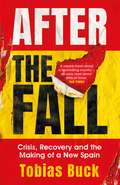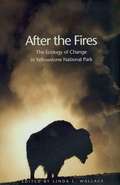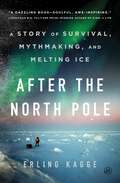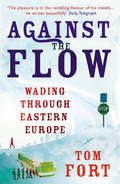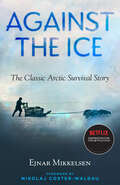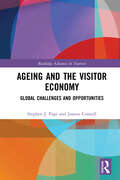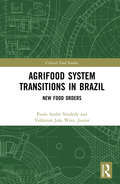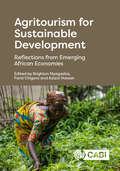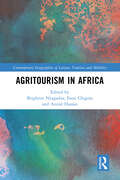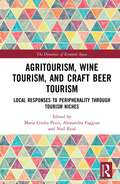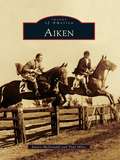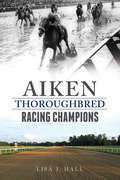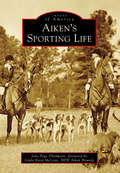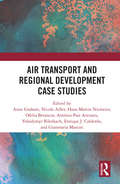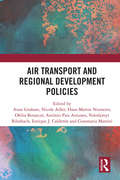- Table View
- List View
After the Dance
by Edwidge DanticatInAfter the Dance, one of Haiti’s most renowned daughters returns to her homeland, taking readers on a stunning, exquisitely rendered journey beyond the hedonistic surface of Carnival and into its deep heart. Edwidge Danticat had long been scared off from Carnival by a loved one, who spun tales of people dislocating hips from gyrating with too much abandon, losing their voices from singing too loudly, going deaf from the clamor of immense speakers, and being punched, stabbed, pummeled, or fondled by other lustful revelers. Now an adult, she resolves to return and exorcise her Carnival demons. She spends the week before Carnival in the area around Jacmel, exploring the rolling hills and lush forests and meeting the people who live and die in them. During her journeys she traces the heroic and tragic history of the island, from French colonists and Haitian revolutionaries to American invaders and home-grown dictators. Danticat also introduces us to many of the performers, artists, and organizers who re-create the myths and legends that bring the Carnival festivities to life. When Carnival arrives, we watch as she goes from observer to participant and finally loses herself in the overwhelming embrace of the crowd. Part travelogue, part memoir, this is a lyrical narrative of a writer rediscovering her country along with a part of herself. It’s also a wonderful introduction to Haiti’s southern coast and to the true beauty of Carnival.
After the Dance: A Walk Through Carnival in Jacmel, Haiti (Updated) (Vintage Departures)
by Edwidge DanticatIn After the Dance, one of Haiti's most renowned daughters returns to her homeland, taking readers on a stunning, exquisitely rendered journey beyond the hedonistic surface of Carnival and into its deep heart.Edwidge Danticat had long been scared off from Carnival by a loved one, who spun tales of people dislocating hips from gyrating with too much abandon, losing their voices from singing too loudly, going deaf from the clamor of immense speakers, and being punched, stabbed, pummeled, or fondled by other lustful revelers. Now an adult, she resolves to return and exorcise her Carnival demons. She spends the week before Carnival in the area around Jacmel, exploring the rolling hills and lush forests and meeting the people who live and die in them. During her journeys she traces the heroic and tragic history of the island, from French colonists and Haitian revolutionaries to American invaders and home-grown dictators. Danticat also introduces us to many of the performers, artists, and organizers who re-create the myths and legends that bring the Carnival festivities to life. When Carnival arrives, we watch as she goes from observer to participant and finally loses herself in the overwhelming embrace of the crowd.Part travelogue, part memoir, this is a lyrical narrative of a writer rediscovering her country along with a part of herself. It's also a wonderful introduction to Haiti's southern coast and to the true beauty of Carnival.
After the Fall: Crisis, Recovery and the Making of a New Spain
by Tobias BuckTobias Buck arrived in Madrid in December 2012, in time to celebrate the bleakest Christmas the city had seen in a generation. Capital and country were reeling from a series of economic shocks that had brought Spain to the brink of ruin. The housing boom had dramatically turned to bust, a large chunk of the nation's banking system was in state hands, businesses were closing across the country, debt was spiralling out of control and unemployment levels had reached a record high.AFTER THE FALL presents a rich and vivid portrait of contemporary Spain at a critical moment in the country's history. The book tells the story of Spain's long boom and sudden bust, the brutal economic crisis that followed, and the political and social aftershocks that reverberate to this day. It explores the origins of the separatist movement in Catalonia, and its bitter clash with the Spanish government that culminated in a failed secession referendum and a divisive declaration of independence. It looks at the legacy of the Civil War and Franco dictatorship, and the continuing struggle over historical memory in Spain today. Based on five years of reporting and hundreds of interviews, AFTER THE FALL takes the reader from the offices of power in Madrid and Barcelona to the villages of the Basque country, still haunted by the memory of political violence, and to the towns of Andalusia, where an entire generation has seen its economic hopes shattered. It describes how the country has been changed by the experience of migration, and why - after decades at the margins - the far-right eventually made a return to Spanish politics. For all the problems and challenges facing Spain today, we see that amid the ruins of the crisis, the search for a new Spanish model is already underway.
After the Fall: Crisis, Recovery and the Making of a New Spain
by Tobias BuckTobias Buck arrived in Madrid in December 2012, in time to celebrate the bleakest Christmas the city had seen in a generation. Capital and country were reeling from a series of economic shocks that had brought Spain to the brink of ruin. The housing boom had dramatically turned to bust, a large chunk of the nation's banking system was in state hands, businesses were closing across the country, debt was spiralling out of control and unemployment levels had reached a record high.AFTER THE FALL presents a rich and vivid portrait of contemporary Spain at a critical moment in the country's history. The book tells the story of Spain's long boom and sudden bust, the brutal economic crisis that followed, and the political and social aftershocks that reverberate to this day. It explores the origins of the separatist movement in Catalonia, and its bitter clash with the Spanish government that culminated in a failed secession referendum and a divisive declaration of independence. It looks at the legacy of the Civil War and Franco dictatorship, and the continuing struggle over historical memory in Spain today. Based on five years of reporting and hundreds of interviews, AFTER THE FALL takes the reader from the offices of power in Madrid and Barcelona to the villages of the Basque country, still haunted by the memory of political violence, and to the towns of Andalusia, where an entire generation has seen its economic hopes shattered. It describes how the country has been changed by the experience of migration, and why - after decades at the margins - the far-right eventually made a return to Spanish politics. For all the problems and challenges facing Spain today, we see that amid the ruins of the crisis, the search for a new Spanish model is already underway.
After the Fires: The Ecology of Change in Yellowstone National Park
by Linda L. WallacePlant and fire ecologist Wallace (U. of Oklahoma) provides a comprehensive scientific summary of the effects of the dramatic fires that tore across Wyoming and Montana in 1988. Even before the ashes had cooled, scientists from many disciplines began research, asking critical questions about the extent and intensity of the fires and initiating studies to determine the effects on geology, hydrology, plant and animal ecology, aquatic ecosystems, and landscape and ecosystem structure and function. The collection shows that the largest effects were found to have been felt at the smallest scales, and that the long-term devastation that had been predicted did not come to pass. Annotation ©2004 Book News, Inc. , Portland, OR (booknews. com)
After the North Pole: A Story of Survival, Mythmaking, and Melting Ice
by Erling KaggeThe Norwegian explorer, philosopher and acclaimed writer tells of his historic 58-day journey to the North Pole on skis in this provocative memoir that is a profound meditation on nature and the history of explorers' obsession. The North Pole looms large in our collective psyche—the ultimate Otherland in a world mapped and traversed. It is the center of our planet’s rotation, one of the places that is most vulnerable in an epoch of global climate change. Its sub-zero temperatures and strange year of one sunset and one sunrise make it an eerie, utterly disorienting place that challenges human endurance and understanding.Erling Kagge and his friend Børge Ousland became the first people “to ever reach the pole without dogs, without depots and without motorized aids,” skiing for 58 days from a drop off point on the ice edge of Canada’s northernmost island.Erling describes his record-making journey, probing the physical challenges and psychological motivations for embarking on such an epic expedition, the history of the territory’s exploration, its place in legend and art, and the thrilling adventures he experienced during the trek. It is another example of what bestselling author Robert MacFarlane has called “Kagge’s extraordinary life in wild places,”Erling also observes the key role that this place holds in our current climate and geopolitical conversations. As majestic, mesmerizing, and monumental as the terrain it captures, After the North Pole is for anyone who has gazed out at the horizon—and wondered what happens if you keep going.After the North Pole is illustrated with 12-14 photographs.Translated from the Norwegian by Kari Dickson.
After the Trip: Unpacking Your Crosscultural Experience
by Cory Trenda Tim DearbornVeteran trip leader and intercultural guide Cory Trenda says yes—if we let the trip launch a journey of integrating the experience into our ongoing life. In After the Trip Trenda provides a unique guide for individuals and teams to make the most of a crosscultural trip after returning home. Readers will find help with navigating the crucial reentry process, remembering and sharing key stories, interweaving new insights into everyday life, and engaging in continuing learning and service. Combining practical tips, reflections, and stories from Trenda's own decades of crosscultural travel, this is an essential resource for organizations, churches, schools, and all travelers who want crosscultural trips to be a catalyst for lasting good. The trip itself is just the beginning; real life change happens after the trip.
After the Waste Land: Democratic Economics for the Year 2000
by David M. Gordon Samuel Bowles Thomas E. WeisskopfThis critique of Reaganomics attempts to provide alternatives to both the supply experiments of the 1980s and neoliberal strategies of austerity. It presents arguments for economic democracy with a worker-oriented blueprint for improving productivity, growth, employment and economic justice.
After the Winter (MacLehose Press Editions #10)
by Guadalupe Nettel"I envy how naturally she makes use of language; her resistance to ornamentation and artifice; and the almost stoic fortitude with which she dispenses her profound and penetrating knowledge of human nature. What's more, in this novel, she has impeccable syntactic control, and her ear is sharper than ever before" Valeria Luiselli, GuernicaA shy young Mexican woman moves to Paris to study literature. Cecilia has few friends, and a morbid fascination with watching the funerals taking place in Père-Lachaise cemetery outside her apartment. She suddenly strikes up a close relationship with her neighbour, a sickly young man who shares her interest in death and believes we can communicate with the dead. After coming to entirely depend on him for company and routine, Cecilia is left devastated by his decision to go to Sicily for his health, and is left alone in an unfriendly city once more.Claudio, meanwhile, lives in New York with the submissive, quiet, but very wealthy Ruth. She makes few demands of him, while acquiescing to all his desires and indulging his obsessive, misogynistic nature. He meets Cecilia by chance when visiting a friend in Paris and their two very different worlds collide with transformative consequences.With startling intensity, humour and insight, Nettel conjures a dark fable about obsession, denial and our modern ability to reach out across the globe in search of love.Translated from the Spanish by Rosalind Harvey
Afternoon Tea Is the New Happy Hour: More than 75 Recipes for Tea, Small Plates, Sweets and More
by Gail GrecoAfternoon tea is more than a meal--it's a moment, an aesthetic, a pose. Afternoon Tea Is the New Happy Hour features more than 75 recipes to make your tea time memorable.Inside you'll find easy-to-follow recipes to create tea sandwiches, scones, breads, cakes, dips, and, of course--tea. Whether you're throwing a vintage tea party or looking for high tea food ideas, there's something for everyone.Bestselling author Gail Greco also shares cooking and serving tea tips, tea etiquette, insight on the differences between using tea bags, a tea kettle, and loose leaves, and the lingo used by tea connoisseurs. Gail includes her own food photography which showcases the happy hour crowd pleasers.In this cookbook, you'll find:Plenty of tea time favorites, like Apple Hibiscus Tea, Tea Toddy One-Shot, Alice's Sorbet Float Tea, and Basic Barista Tea Latte with Rooibos.For appetizers Gail shares Cheddar Ranch Crab Dip, Spicey Baked Artichoke Bruschetta, Pizza Cupcakes, and Mini Soft Baked Pretzels.If you're craving sandwiches, you'll find Pimento Pita Pocket Poufs and Food Truck Zone Shrimp/Corn ' Wiches.And to keep everyone excited, you'll find Tea-Thyme Ginger Bars, Glazed Lemon Loaf Cake, Teasicles, Potato Chip Walnut Tartlets, and Puddle-of-Chocolate and Chai Pots de Crème.There's something for everyone!This beautiful cookbook will provide you with the high tea food ideas you can't find anywhere else. Afternoon Tea Is the New Happy Hour is a wildly creative mix of vintage and modern. Pinkies up, it's tea time!
Aftershock
by Kelly EastonIn shock and unable to speak after being in a car accident in Oregon which has killed his parents, seventeen-year-old Adam journeys across the country to his home in Rhode Island.
Against Venice
by John Howe Regis DebrayNumerous writers have made declarations of love to cities, but Against Venice speaks not of love, but of dislike. It is a counterblast to intellectuals who regard Venice as the city where existentialism should be experienced, at parties in the palazzi of friends. Debray criticises this world in a refreshingly irreverent way, luring the traveller back to this seductive city.
Against the Flow
by Tom Fort'You have to be on your guard when you go back to special places. You may be able to locate them easily enough on the map, but maps tell only one story. Times change and places and people with them. The memory plays curious tricks, and things aren't always as you remember or expect.' Twenty years ago, Tom Fort drove his little red car onto the ferry at Felixstowe, bound for all points east. Eastern Europe was still a faraway place, just emerging from its half-century of waking nightmare, blinking, injured, full of fears but importantly full of hope too. Things were different then. Czechoslovakia was still Czechoslovakia, Russia was the USSR and the Warsaw Pact had not formally dissolved. But what did exist then, as they do now, were the rivers: the nations' lifeblood. It was along and by these rivers that Fort travelled around Eastern Europe meeting its people and immersing himself in its culture.Since that trip though, much has changed and in more recent years around one million Poles have settled in Britain. Fort's local paper has a Polish edition, his supermarket has a full range of Polish bread, sausage and beer and an influx of Polish businesses opened in his town centre. And it's not just the Poles, his gym has a Lithuanian trainer and the woman who cuts his hair is from Hungary. As a tide of people began to leave Eastern Europe and settle in the UK, Tom Fort started to wonder about what they were leaving behind and whether the friends he had made all those years ago remained. And so he decided to make the journey again, travelling against the flow of the steady human stream to explore the once familiar places. As he did so, many began to return as the recession took hold of Western Europe. Tom was keen to find out what had changed and how the places, people and way of life had moved on and of course fit in a spot of fishing along the way.
Against the Ice: The Classic Arctic Survival Story
by Ejnar MikkelsenSoon to be a Netflix feature film co-written by and starring Nikolaj Coster-Waldau (Game of Thrones) The harrowing, amazing, and often amusing personal account of two mismatched Arctic explorers who banded together to keep themselves sane on an historic expedition gone horribly wrongEjnar Mikkelsen was devoted to Arctic exploration. In 1910 he decided to search for the diaries of the ill-fated Mylius-Erichsen expedition, which had set out to prove that Robert Peary&’s outline of the East Greenland coast was a myth, erroneous and presumably self-serving. Iver Iversen was a mechanic who joined Mikkelsen in Iceland when the expedition&’s boat needed repair. Several months later, Mikkelsen and Iversen embarked on an incredible journey during which they would suffer every imaginable Arctic travail: implacable cold, scurvy, starvation, frostbite, snow blindness, plunges into icy seawater, impossible sledding conditions, Vitamin A poisoning, debilitated dogs, apocalyptic storms, gaping crevasses, and assorted mortifications of the flesh. Mikkelsen&’s diary was even eaten by a bear. Three years of this, coupled with seemingly no hope of rescue, would drive most crazy, yet the two retained both their sanity as well as their humor. Indeed, what may have saved them was their refusal to become as desolate as their surroundings… Nikolaj Coster-Waldau, who co-adapted the book into a screenplay, provides a new foreword to this brand-new edition of the classic exploration memoir, which was one of The Explorer's Club&’s 100 Best Books of the 20th Century. Originally published as Two Against the Ice: A Classic Arctic Survival Story and a Remarkable Account of Companionship in the Face of Adversity. Translated from the Danish by Maurice Michael.
Ageing and the Visitor Economy: Global Challenges and Opportunities (Routledge Advances in Tourism)
by Stephen J. Page Joanne ConnellThis significant volume is the first to use primary research evidence to examine tourism, ageing and the implications of an ageing population for the visitor economy. Adopting a multidisciplinary approach, this book offers insights into the new opportunities, threats and challenges that the growing ageing-tourism markets poses. The ageing population has created a demographic time bomb with a population structure that is skewed towards a growing proportion of older people. When this is combined with the impact of health conditions, such as dementia, the future shape of visitor demand and tourism behaviour is likely to change and face many new challenges, albeit at different rates in time and space. Chapters include cutting-edge insights into future issues, while interviews are used to illustrate and explain issues affecting ageing and tourism, creating a much-needed synthesis of the ageing–tourism nexus to demonstrate intellectual leadership around this theme. This book will be of great interest to all upper-level students, academics and researchers in the fields of tourism, hospitality, leisure studies, and health and social care.
Agrifood System Transitions in Brazil: New Food Orders (Critical Food Studies)
by Paulo André Niederle Valdemar João Wesz JuniorThis book explores the agrifood system transitions in Brazil to provide a new understanding of the trajectory of agriculture and rural development in this country. It accentuates the increasing diversifi cation and hybridization of food production and consumption practices throughout history. With a framework that combines convention theory, neoinstitutional approaches and practice theory, this book suggests the concept of “food orders” which represents different arrangements of practices, institutions and sociotechnical artifacts. By exploring the interrelations between these elements, the book looks at six different food orders: industrial, commercial, domestic, aesthetic, civic and fi nancial, in tandem with examples of practices, sectors and territories to understand the dynamics of each one. This aids in understanding the main tendencies of the agrifood sector in such a vast country that, being a major player in global food markets, also affect production and consumption dynamics in several other countries. Besides, this book also seeks to comprehend the current institutional changes in Brazil that may be critical to interpret the global dissemination of populist and autocratic governments. Offering key insights into the contemporary sociology of agriculture and food, this book demonstrates how strengthening democracy and supporting the organization of civil society are major challenges when we think about transition for sustainable food systems.
Agritourism Marketing in Africa: Exploring Digital and Social Media Strategy
by Azizul Hassan Brighton Nyagadza Farai Chigora Abu BasharThis edited volume takes a multi-faceted approach, giving readers insights into the role of digital and social media marketing in the agritourism industry in Africa. Each chapter provides some theoretical, policy and practical implications for policy makers, educational practitioners, students and business communities on how agritourism’s digital and social media marketing strategies could be of benefit to them. It considers macro, micro and firm-level analyses relating to how agritourism digital and social media marketing could be harnessed to fuel tourism corporate brands development in under-researched African contexts. Its empirical case studies provide scientific evidence-based approaches that inform understanding on the contribution of these antecedents to the realisation of tourism corporate brands development. The book balances theory and experimentation, providing a thorough explication of the tools and techniques of agritourism digital and social media marketing, marketing, corporate communications and corporate reputation management relevant to the tourism and agricultural organisations in the African continent in particular, and the globe at large. As we reach the point of no return in our destruction of the planet, we need to look at global solutions to ‘reverse the traditional thinking’ (by applying frugal transformative futuristic solutions) of putting economy before green ecological balance and instead look to new ways of changing our appetite for wealth to fit within the ecological cycles which naturally exist.
Agritourism for Sustainable Development: Reflections from Emerging African Economies
by Dumisani Rumbidzai Muzira Ernest Mugoni Jabulani Garwi Admire Mthombeni Bronson Mutanda Collen Sabao Dzingai Kennedy Nyahunzvi Edward Chinongwa Enard Mutenheri Felix Chari Geoffrey Korir Gilda Eyang Gracious Mutipforo Hellen Amunga Judith Moyo Katsande Chipo Martin Dzapasi Noreen Watyoka Nyasha Tendai Makiwa Lucyna Przezborska-Skobiej Komborerai Wilfred Chikwape Obert Sifile Ranganayi Njodzi Raymond Mapuranga Regis Muchowe Samulo Mutale Sharon Chisango Shingirai Siziba Solomon Marime Tendai Shelton Muwani Tichakunda Valentine Chabata Willard Muntanga Yeukayi Dzapasi Zibanai ZhouThrough the lens of African emerging economies, this text examines empirical studies and the related practices of agritourism. By looking at tourism innovation, entrepreneurship ethics and responsibility of public and private organizational stakeholders, the text promotes an understanding of how radical novel sustainable agritourism might be implemented to help society's living become more sustainable with low usage of material resources, low energy and environmental cost. Informed by the 2030 Agenda for Sustainable Development and Sustainable Development Goals (SDGs) framework, which emphasize the fostering of novel sustainable agritourism, the book includes: methodologies, theory, reviews, primary research findings and practice topics such as start-ups, legal aspects, CSR and digital technologies techniques and tools with global application The book will be of interest to academics and postgraduate students interested in the challenges of sustainable agritourism and African emerging economies.
Agritourism in Africa (ISSN)
by Azizul Hassan Brighton Nyagadza Farai ChigoraThis insightful, timely and multi-faceted book offers significant insight into the role and complex dynamics of agritourism in Africa.Logically structured, data-led and richly illustrated throughout, chapters provide theoretical, policy and practical implications on the successes and challenges of achieving sustainable agritourism destinations, with an emphasis on technology, that not only grows African economies, but offers work opportunities, increased social empowerment and diversity. Based on empirical research, the volume covers a wide range of topics relating to agritourism in Africa, elucidated through inclusion of case studies and examples from around the continent, including Ghana, Angola and Nigeria. Topics covered include discussion of the features required for a successful agritourism business, the impact of social media and digital marketing on new agritourism destinations.This volume will be of pivotal interest to students, researchers and scholars of Tourism, African Studies and Development Studies.
Agritourism, Wine Tourism, and Craft Beer Tourism: Local Responses to Peripherality Through Tourism Niches (The Dynamics of Economic Space)
by Maria Giulia PezziThis book delves into the development opportunities for peripheral areas explored through the emerging practices of agritourism, wine tourism, and craft beer tourism. It celebrates the entrepreneurial spirit of people living in peri-urban regions.Peripheral areas tend to be far from urban hubs, providing essential services but also typically suffering from marginalisation and remoteness, despite the access to environmental, cultural, and social resources. In this sense, this book investigates the linkages between local agency and tourism in peripheral areas, the role of existing policies, and the evolving bottom-up practices in fostering local development. The basic aim is to disestablish the dichotomies that often emerge when dealing with issues of rural–urban and/or centre–periphery relationships; innovation vs tradition; authenticity vs mise en scène; agency vs inertia; and social, cultural, economic mobility vs immobility; etc. With focused attention on the possible compliance or conflicting strategies of local actors with the existing policies, the book considers how local actors and communities respond to the implications of peripherality in areas often impacted by marginalising processes.Drawing upon case studies from North America and Europe, this book presents this connection as a global phenomenon which will be of interest to community and economic development planners and entrepreneurs.
Aiken
by Paul Miles Janice McdonaldIt seems unlikely that a place as far off the beaten track as Aiken, South Carolina, would become the preferred wintering location for the denizens of New York society. But from the late 1800s, the most recognized names in America--the Vanderbilts, the Whitneys, and even the Roosevelts--began coming to this charming Southern city to escape the cold, relax among the oaks, and play. And play they did, establishing Aiken as an international polo capital and a premier place to ride, hunt, and golf. Aiken has so much history beyond the folks known as the winter colonists. Legends of the area's restorative powers date back to Native Americans. Aiken also boasts an amazing number of records, including the destination for the world's longest railroad in 1833 and the second-oldest 18-hole golf course in the United States, the Palmetto Golf Club, built in 1892.
Aiken Thoroughbred Racing Champions (Sports)
by Lisa J. HallSince the 1940s, forty racing champions have traveled the hallowed grounds at the historic Aiken Training Track. Thoroughbred icons such as Kelso, Tom Fool, Swale, Pleasant Colony, Conquistador Cielo and Shuvee trained at this world-renowned track. Numerous members of the Aiken Thoroughbred Racing Hall of Fame won the biggest races in the sport. These champions combined for a total of 546 wins in 1,395 starts, including wins in the Kentucky Derby, the Preakness Stakes and the Belmont Stakes. Race along with author Lisa J. Hall as she pays homage to these equine champions and an Aiken legacy.
Aiken's Sporting Life (Images of America)
by Jane Page Thompson Linda Knox McleanIn 1869, newspaper articles touted Aiken as a health and pleasure resort with the world's largest wooden hotel. Swirling social life and sporting action continued during the war years, when the women of society carried on local traditions. In 1950, Aiken was bustling with scientists and engineers who relocated to work at the Savannah River Site. The last half of the 20th century saw swelling crowds at polo matches, steeplechase races, fox hunts, golf courses, and cultural amusements. In the early 21st century, many Aiken sporting traditions mark milestone anniversaries. At the center of everything is Hitchcock Woods, a woodland paradise, pine-topped cathedral, and equestrian playground that remains open year-round. The Hitchcock Woods Foundation was established to safeguard this treasure within the heart of Aiken. The Aiken Horse Show, held each spring, and Blessing of the Hounds, held on Thanksgiving, are two of the most revered of Aiken's sporting traditions.
Air Transport and Regional Development Case Studies
by Anne Graham Gianmaria Martini Hans-Martin Niemeier Nicole Adler Ofelia Betancor António Pais Antunes Volodymyr Bilotkach Enrique J. CalderónThis book is one of three inter-connected books related to a four-year European Cooperation in Science and Technology (COST) Action established in 2015. The Action, called Air Transport and Regional Development (ATARD), aimed to promote a better understanding of how the air transport related problems of core regions and remote regions should be addressed in order to enhance both economic competitiveness and social cohesion in Europe. This book focuses on case studies in Europe related to air transport and regional development. It is divided into four geographical regions after a general chapter that compares regional air transport connectivity between remote and central areas in Europe. The first region is Northern and Western Northern Europe (case studies related specifically to Norway, Finland, the United Kingdom, and Ireland); the second is Central and Eastern Europe, (Bulgaria, Bosnia and Herzegovina, and Poland); the third is Central Western Europe (Belgium and Switzerland); and finally, the fourth is Southern Europe (Portugal, Spain, and Italy). There is no other single source publication that currently covers this topic area in such a comprehensive manner by considering so many countries. The book aims at becoming a major reference on the topic, drawing from experienced researchers in the field, covering the diverse experience and knowledge of the members of the COST Action. The book will appeal to academics, practitioners, and policymakers who have a particular interest in acquiring detailed comparative knowledge and understanding of air transport and regional development in many different European countries. Together with the other two books (Air Transport and Regional Development Methodologies and Air Transport and Regional Development Policies), it fills a much-needed gap in the literature.
Air Transport and Regional Development Policies
by Anne Graham; Nicole Adler; Hans-Martin Niemeier; Ofelia Betancor; António Pais Antunes; Volodymyr Bilotkach; Enrique J. Calderón; Gianmaria MartiniAir Transport and Regional Development Policies is one of three interconnected books related to a four-year European Cooperation in Science and Technology (COST) Action established in 2015. The Action, called Air Transport and Regional Development (ATARD), aimed to promote a better understanding of how the air transport–related problems of core regions and remote regions should be addressed in order to enhance both economic competitiveness and social cohesion in Europe. This book focuses on policy implications related to air transport and regional development. It begins with chapters that generally discuss important policy issues related to air transport and regional development in relation to connectivity and accessibility; dependency; airport governance and regulation; and air traffic control frameworks. This is followed by a number of chapters that consider government subsidies and state aid. The final chapters focus on other policy implications (tourism development, airport expansion, passenger taxation and noise control). Currently, no other single source publication covers this topic area in such a comprehensive manner, insofar as it considers so many policies and examples. The book aims at becoming a major reference source on the topic, drawing from experienced researchers in the field, covering the diverse experience and knowledge of the members of the COST Action. The book will appeal to academics, practitioners and government bodies who have a particular interest in acquiring detailed comparative knowledge and understanding of the policy implications of air transport and regional development. Along with the other two books (Air Transport and Regional Development Methodologies and Air Transport and Regional Development Case Studies) it fills a much-needed gap in the literature.


